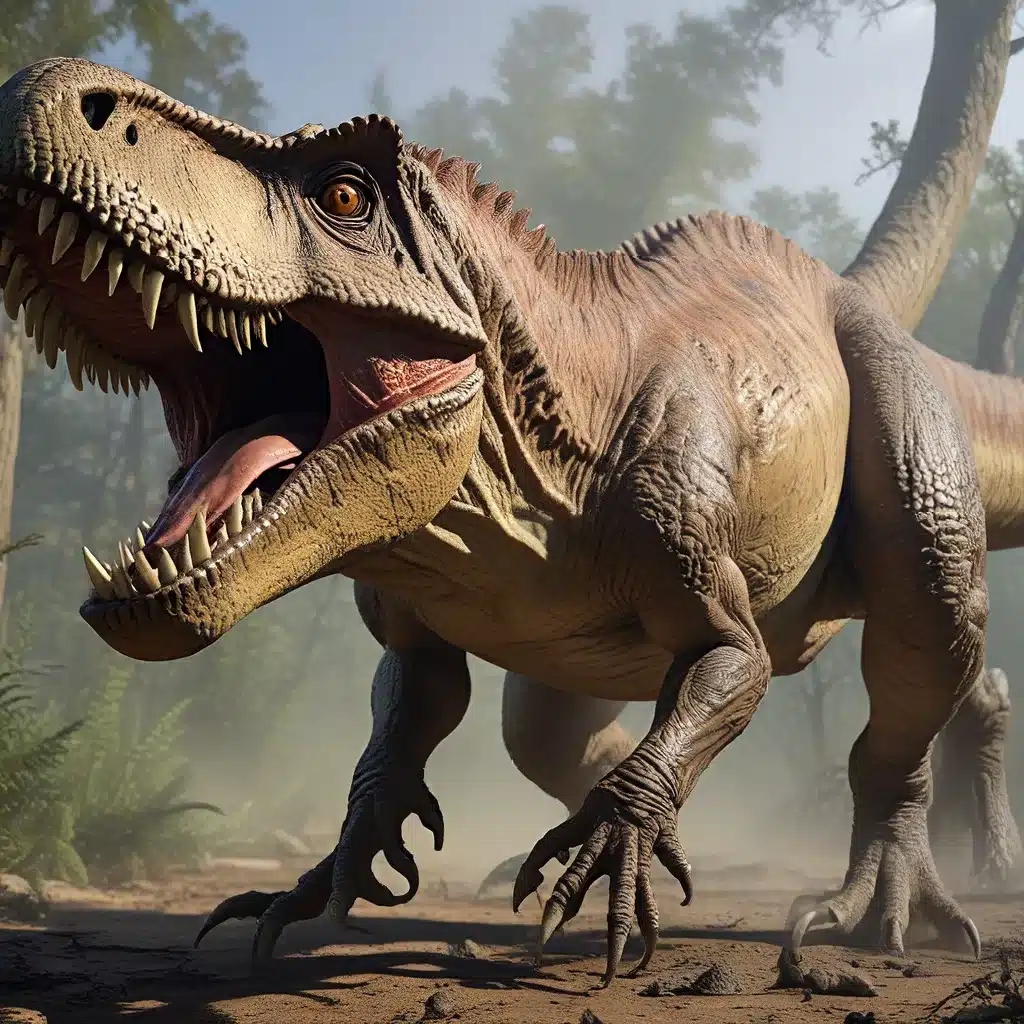
The Tyrannosaurs, an iconic group of carnivorous dinosaurs, have captivated the imagination of paleontologists, archaeologists, and the general public alike. These fearsome predators, exemplified by the legendary Tyrannosaurus rex, have long been the subject of intense study and speculation. However, the rise to dominance of these apex predators is a story that is not fully understood, until now.
The Mysterious Gap in the Fossil Record
For millions of years, the tyrannosaurs remained relatively small, while their contemporaries, the allosaurs, reigned as the dominant predators of the ancient ecosystem. This puzzling phenomenon has long been a source of intrigue among scientists, as the expected evolutionary trajectory would have seen the tyrannosaurs grow into towering, apex predators.
The recent discovery of a new, massive carnivore, Siats meekerorum, has shed light on this mystery. Siats, a member of the allosaur family, was a colossal predator that prowled the western regions of North America during the late Cretaceous period, approximately 98 million years ago. Its sheer size and dominance may have been the key factor that kept the tyrannosaurs in check, preventing them from evolving into the giants they would eventually become.
The Rise of the Tyrannosaurs
As Siats stalked the ancient landscape, the tyrannosaurs remained relatively small, their evolutionary path seemingly stifled by the presence of this formidable allosaur. However, this dynamic shifted dramatically within the next 18 million years, as evidenced by the emergence of Lythronax, a tyrannosaur that may have exceeded 10.5 meters (35 feet) in length.
This transition marked a pivotal moment in the history of the tyrannosaurs, as they gradually usurped the position of the allosaurs as the dominant predators of their ecosystem. The factors that led to this remarkable shift in the balance of power are still being investigated, but it is clear that a significant ecological change must have occurred to facilitate the rise of the tyrannosaurs.
Unraveling the Mysteries of Tyrannosaur Dominance
The discovery of Siats meekerorum has provided a crucial piece of the puzzle, shedding light on the long-standing mystery of why the tyrannosaurs remained relatively small for millions of years. By understanding the role of this enormous allosaur in keeping the tyrannosaurs in check, scientists can now focus their efforts on uncovering the specific environmental or evolutionary factors that ultimately led to the tyrannosaurs’ ascendance.
Through the analysis of fossil records, comparative studies, and ongoing archaeological excavations, researchers are steadily piecing together the complex narrative of the tyrannosaurs’ rise to dominance. This journey of discovery not only illuminates the intricate dynamics of ancient ecosystems but also offers valuable insights into the broader patterns and mechanisms of evolution.
The Enduring Legacy of the Tyrannosaurs
The tyrannosaurs, with their iconic features and formidable presence, have left an indelible mark on our collective imagination. From the towering Tyrannosaurus rex to the lesser-known species that paved the way for their ultimate supremacy, these predators have captured the fascination of people around the world.
As we continue to unravel the mysteries surrounding the tyrannosaurs, we gain a deeper understanding of the evolutionary processes that shaped our planet’s ancient past. The story of their rise to dominance is a testament to the resilience, adaptability, and sheer power of these remarkable creatures, whose legacy continues to inspire and captivate us to this day.
Exploring the Frontiers of Dinosaur Discovery
The ongoing exploration and study of dinosaur fossils and archaeological sites have yielded a wealth of new insights, challenging our existing understanding of these ancient creatures. From the discovery of previously unknown species to the rewriting of established evolutionary narratives, the field of paleontology remains a dynamic and ever-evolving discipline.
By continuing to explore the frontiers of dinosaur discovery, we unlock the secrets of the past and gain a deeper appreciation for the complex and interconnected nature of life on our planet. The story of the tyrannosaurs is just one chapter in the vast tapestry of prehistoric life, and as we continue to uncover new evidence, the picture only becomes more captivating and profound.


